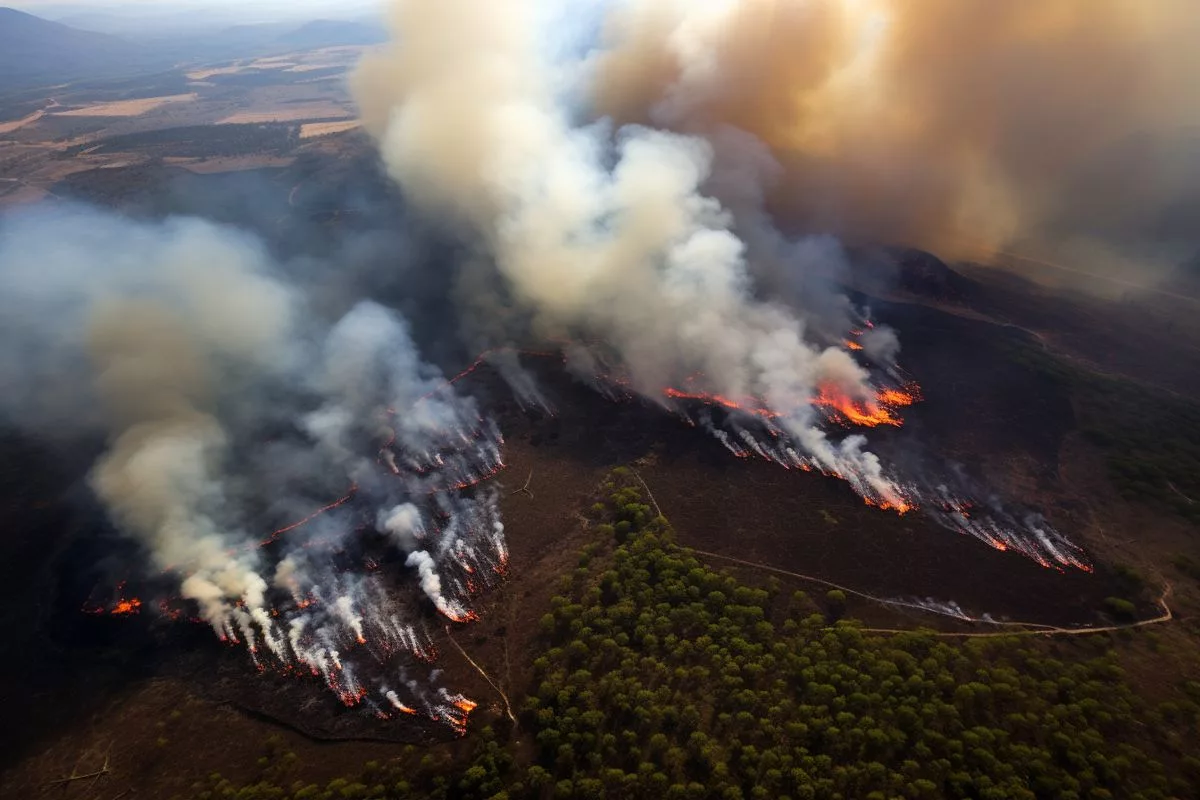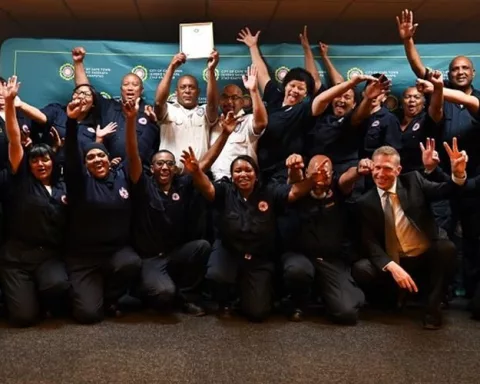A raging wildfire has engulfed Simon’s Town, a vital naval base in South Africa with a rich history. The town’s firefighters are battling the blaze, but strong winds are making it challenging to contain. The wildfire has endangered the African penguin colony at Boulders Beach, and tweets from local residents have revealed administrative difficulties in managing the crisis. Despite this, the town is showing remarkable resilience in the face of the natural disaster.
Simon’s Town, situated in the heart of South Africa’s naval legacy, is currently facing a significant challenge. A widespread wildfire that ignited on the mountainous terrain has caused a fierce response from firefighters. Despite the relentless attempts of the firefighters to quell the blaze, the strong southeasterly wind sweeping across the Cape Peninsula has made it difficult to do so.
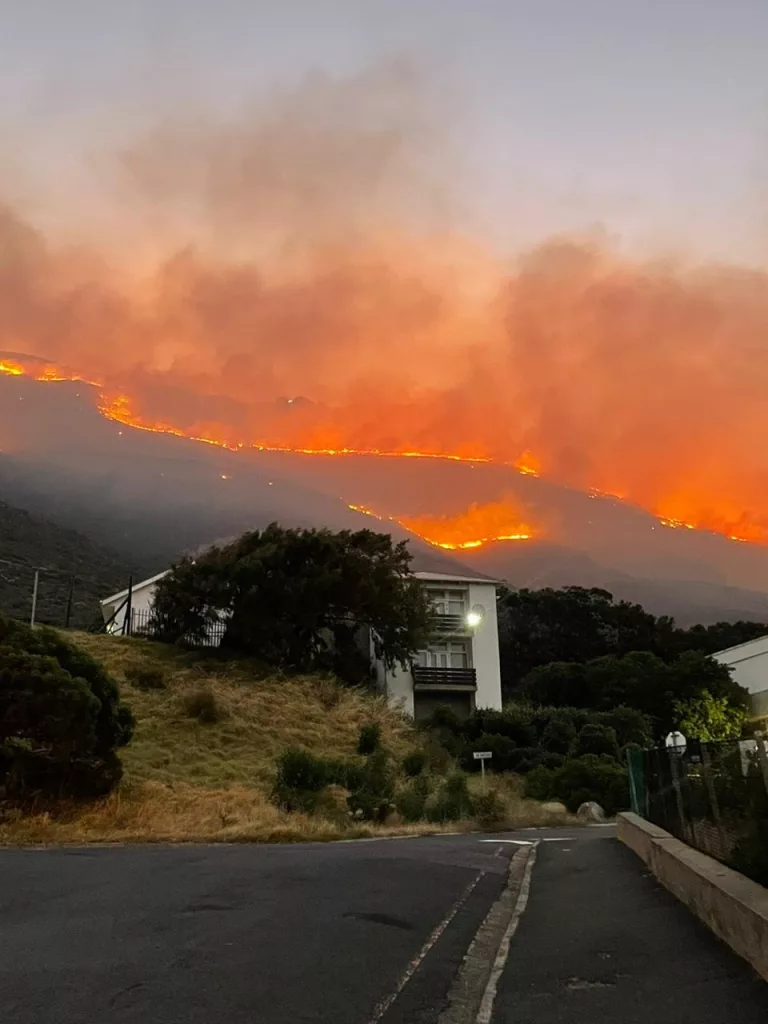
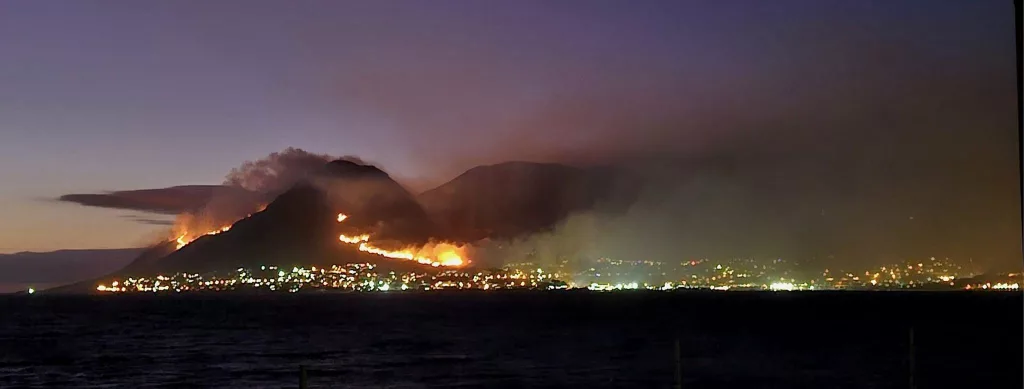
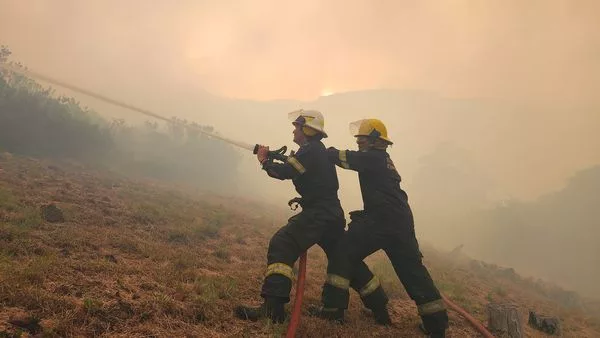

The Naval Legacy at Risk
Simon’s Town, named after Simon van der Stel, the former Dutch governor of the Cape Colony, has been a crucial naval base for over two hundred years. Today, it faces a different kind of threat – a deadly wildfire, a harsh reality of its natural environment.
A Naval Base on Fire’s Edge
The largest naval base in Simon’s Town is of strategic importance to the South African Navy. It is now perilously close to the potentially devastating force of the wildfire, highlighting the bravery and tenacity of the town’s seafaring community.
Deciphering the Dynamics of Wildfire
The Mediterranean climate of the Cape region makes the area around Simon’s Town a perfect breeding ground for wildfires during the scorching summer months. The native vegetation, fynbos, thrives on this fiery phenomenon, using it as a means for regeneration and fostering biodiversity in this singular floral realm.
Endangered Biodiversity
Within the smallest yet richest floral kingdoms, fire serves as a critical catalyst in the lifecycle of the fynbos. However, the African penguin colony at Boulders Beach, a Simon’s Town gem, faces a precarious situation as the inferno infringes upon their habitat.
Rallying the Firefighters
The firefighter brigades in Simon’s Town, together with national park staff and volunteers, are resolutely combating the wildfire. The South African National Defence Force is ready to deploy aerial firefighting units for water bombing missions.
Preventing and Managing Wildfires
The City of Cape Town, working with environmental agencies, has been proactive in implementing fire prevention strategies. These include controlled burns, maintaining firebreaks, and educating the public on fire safety practices.
In the midst of this crisis, tweets from local residents have brought to light administrative challenges in Simon’s Town, raising questions about the effectiveness of local government bodies. One tweet particularly highlights persistent systemic issues, underscoring the need for efficiency during crises when community safety is compromised by natural disasters.
Despite nature’s unpredictable fury, Simon’s Town today is a testament to human resilience. As the southeaster intensifies the wildfire, the town’s indomitable spirit emerges triumphant, with its people and services joining forces to safeguard their beloved historical town from the fiery onslaught.
1. What is happening in Simon’s Town?
A raging wildfire has engulfed Simon’s Town, a vital naval base in South Africa with a rich history, endangering the African penguin colony at Boulders Beach, and tweets from local residents have revealed administrative difficulties in managing the crisis.
2. What is the significance of Simon’s Town?
Simon’s Town, named after Simon van der Stel, the former Dutch governor of the Cape Colony, has been a crucial naval base for over two hundred years.
3. Why is the wildfire difficult to control?
The wildfire has been difficult to control due to strong southeasterly winds sweeping across the Cape Peninsula.
4. How does fire serve as a critical catalyst in the lifecycle of the fynbos?
Within the smallest yet richest floral kingdoms, fire serves as a critical catalyst in the lifecycle of the fynbos. The native vegetation, fynbos, thrives on this fiery phenomenon, using it as a means for regeneration and fostering biodiversity in this singular floral realm.
5. What is being done to prevent and manage wildfires?
The City of Cape Town, working with environmental agencies, has been proactive in implementing fire prevention strategies. These include controlled burns, maintaining firebreaks, and educating the public on fire safety practices.

